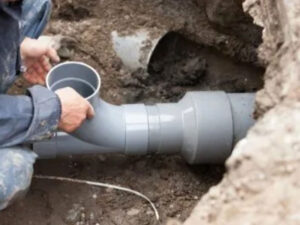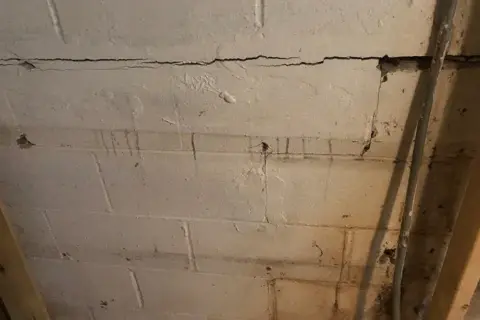Dealing With Foundation Issues: Causes, Signs, and Solutions
Foundation issues are a homeowner’s nightmare. These problems can wreak havoc on your property and lead to costly repairs. Understanding the causes, recognizing the signs, and knowing the solutions are crucial for maintaining the structural integrity of your home. In this article, we’ll delve into the world of foundation issues, helping you to navigate the complexities and make informed decisions for your property.
1. Common Causes of Foundation Issues
Before you can effectively address foundation problems, it’s essential to understand the root causes:
1. Soil Shrinkage and Expansion:

Soil plays a fundamental role in the stability of your home’s foundation. It can expand and contract due to changes in moisture content, which is often influenced by seasonal weather patterns. Here’s a breakdown of this cause:
- Drought and Dry Conditions: During dry spells or droughts, the soil around your home can lose moisture, causing it to shrink. As it shrinks, it creates voids beneath the foundation, leading to settlement and structural issues.
- Excessive Rainfall: Conversely, heavy rainfall can saturate the soil around your foundation. When the soil becomes oversaturated, it expands, exerting pressure on the foundation. This expansion can result in heaving and foundation upheaval.
2. Poor Drainage:
Inadequate water management around basement foundations on your property can be a significant contributor to foundation problems. Proper drainage is essential to prevent water from accumulating near the foundation. The issues related to poor drainage include:
- Inadequate or Clogged Gutters: If your gutters and downspouts are damaged or clogged, rainwater can overflow, leading to water pooling around the foundation.
- Improper Grading: The slope of the ground around your home should encourage water to flow away from the foundation. If the grading is incorrect or has settled over time, water may collect near the house, causing foundation damage.
- Lack of Sump Pump: In areas prone to high groundwater levels or frequent heavy rains, the installation of a sump pump can help remove excess water from the soil to prevent water-related foundation issues.
3. Tree Roots:
Beautiful mature trees near your home can be a lovely addition to your landscape, but their roots can be a hidden threat to your foundation. Here’s how tree roots can contribute to foundation issues:
- Moisture Absorption: Trees absorb moisture from the soil to sustain themselves. As they grow, their roots can extract significant amounts of moisture from the soil, causing it to dry out and shrink.
- Soil Depletion: As the soil dries and contracts due to tree roots, it can create gaps or voids around the foundation, which can lead to uneven settlement.
- Structural Interference: Large tree roots can physically push against the foundation, creating pressure and causing it to crack or shift.
To mitigate the impact of tree roots on your foundation interior walls, consider installing root barriers or consulting with an arborist to assess and manage the tree’s impact on your property.
4. Earthquakes and Natural Disasters:
While not as common as the previous causes, earthquakes, and natural disasters can be devastating to a foundation. These events can lead to sudden, unexpected shifts in the ground, causing foundation damage. If you live in an earthquake-prone area, it’s crucial to ensure your home is built to withstand seismic activity and to have the foundation inspected regularly for any signs of damage.
5. Poor Construction:
The quality of your home’s construction can also be a root cause of foundation issues. If the foundation was not built correctly or if subpar materials were used, it can lead to structural problems over time. Common construction-related issues include:
- Inadequate Footings: If the footings under your foundation are not properly designed or installed, they may not adequately support the weight of your home, leading to settlement or cracking.
- Substandard Concrete Mix: Low-quality concrete or improperly mixed concrete can result in weakened foundation walls and footings.
- Insufficient Drainage Systems: If the home’s original construction lacked proper drainage systems, it can exacerbate foundation problems related to water management.
Understanding these common causes of foundation issues is the first step in preventing or addressing them effectively. Regular inspections, appropriate maintenance, and professional guidance can help safeguard your home’s foundation and preserve its structural integrity.
2. Recognizing Signs of Foundation Issues
Being vigilant about early warning signs can save you from extensive damage. Look out for these indicators of foundation problems:
1. Cracks:
Cracks are one of the most visible and common signs of foundation problems. Understanding the different types of foundation cracks can help you assess the severity of the issue:
- Vertical Cracks: These cracks often appear in the foundation walls and are typically the result of normal settling. However, if they widen or become extensive, it may indicate a more serious problem.
- Horizontal Cracks: Horizontal cracks in the foundation walls are usually a cause for concern. They can signal excessive lateral pressure or bowing in the walls, which could compromise the structural integrity of the foundation.
- Stair-Step Cracks: These cracks, which resemble a staircase pattern, are frequently found in brick or block foundations. They are indicative of foundation movement and may need immediate attention.
- Diagonal Cracks: Diagonal cracks in the foundation are often a result of differential settling, where one part of the foundation moves more than another. These cracks can vary in severity and should be examined by a professional.
2. Doors and Windows Sticking:
Difficulty in opening and closing doors and windows can be an early sign of foundation issues. When the foundation shifts or settles unevenly, it can cause the frame of your home to become distorted. As a result, doors and windows may no longer fit properly, leading to sticking, jamming, or gaps around the frames. If you notice this problem, especially if it’s sudden or widespread throughout your home, it’s important to investigate the underlying cause.
3. Uneven Floors:
Uneven floors can be a clear indicator of foundation settlement or shifting. Signs of uneven floors include:
- Sagging or Sloping: Floors that appear to slope or sag in certain areas can indicate that the foundation beneath has moved or settled unevenly.
- Gaps or Spaces: Gaps or spaces between the floor and the baseboards or walls can suggest that the foundation has shifted, causing the floor to separate from the walls.
- Bouncy or Soft Spots: If certain areas of your floor feel bouncy or soft when you walk on them, it could be a sign of weakened support beneath.
4. Bowing or Leaning Walls:
Foundation problems can manifest in the form of walls that are tilting or bowing inward or outward. These issues often indicate that the structural integrity of the foundation walls has been compromised. Bowing or leaning walls can be particularly dangerous as they may eventually collapse if fix foundation issues are not addressed promptly.
5. Gaps in Brickwork or Siding:
If you have brick or siding on your home’s exterior, keep an eye out for gaps or separations. When the foundation shifts, it can cause the materials on the various exterior walls of your home to crack, separate, or pull away. These gaps can compromise the weatherproofing of your home and may also indicate a foundation problem.
6. Additional Clues:
In addition to the above-mentioned signs, pay attention to other subtle indicators of foundation issues, such as drainage issues such as:
- Cracks in the Drywall: Interior drywall may develop cracks due to foundation movement.
- Baseboard Separation: Gaps between the baseboards and the floor can suggest foundation problems.
- Cabinets and Countertops Separating: Countertops and cabinets may pull away from the wall due to foundation shifts.
- Visible Foundation Movement: In some cases, you may be able to observe the foundation itself moving or tilting, especially in crawl spaces or basements.
It’s important to note that these signs can vary in severity, and some may be more subtle than others. If you notice any of these indicators, it’s advisable to consult with a professional foundation inspector or contractor who can assess the situation and recommend appropriate solutions. Early detection and timely action can prevent further damage and costly repairs.
3. Solutions for Foundation Issues
Addressing foundation problems requires a professional assessment, but here are some common solutions:
1. Foundation Repair Techniques:
The appropriate solution for your foundation problems will depend on the specific issues and the severity of the damage. Some common, foundation leak repair techniques include:
- Foundation Underpinning: This involves reinforcing or strengthening the foundation by adding support beneath it. Methods include helical piers, push piers, and concrete pilings. Underpinning can lift and stabilize a settling foundation.
- Wall Anchoring: In cases where foundation walls are bowing or leaning, wall anchoring or wall tiebacks can be used to provide lateral support, preventing further movement and restoring stability.
- Slab Jacking or Mudjacking: For sunken or uneven concrete slabs, such as sidewalks or garage floors, slab jacking can be employed. This process involves injecting a slurry mixture beneath the slab, raising it back into position.
- Crawl Space Encapsulation: If moisture in the crawl space is causing foundation issues, encapsulation is a solution. It involves sealing the crawl space to prevent moisture ingress and stabilize the soil.
- Concrete Resurfacing or Overlay: In cases where minor surface cracks or spalling have occurred on concrete foundations, resurfacing or overlaying with a new layer of concrete can restore appearance and strength.
2. Grading and Drainage Improvement:
One of the most cost-effective ways to repair costs and address foundation issues is to improve the grading and drainage around your home:
- Proper Grading: Ensure the ground slopes away from your home’s foundation to direct water away. Re-grading may be necessary to create the right slope.
- Rain Gutters and Downspouts: Install or maintain rain gutters and downspouts to divert rainwater away from the foundation. Keep them free from debris and ensure they discharge water at least 5-10 feet from the house.
- French Drains: In areas with poor drainage or a high water table, installing a French drain system can effectively channel excess water away from the foundation.
- Sump Pump Installation: A sump pump can be used to pump out excess groundwater or rainwater from your basement or crawl space, preventing water-related foundation issues.
3. Tree Removal or Root Barrier Installation:
To address foundation problems caused by tree roots, consider the following solutions:
- Tree Removal: If a tree’s roots are a significant contributor to foundation issues, removing the tree may be the most effective solution. However, this should be considered as a last resort, especially for mature and valuable trees.
- Root Barrier Installation: A root barrier is a physical barrier made of materials like metal or plastic that is installed between the tree and the foundation. It prevents tree roots from reaching the foundation and depleting the soil’s moisture.
4. Preventative Maintenance:
Preventing foundation problems is often more cost-effective than repairing them. Regular maintenance can help:
- Keep Gutters Clean: Regularly clean and maintain gutters and downspouts to ensure they function properly.
- Monitor Soil Moisture: Maintain consistent moisture levels in the soil around your home to minimize soil expansion and contraction.
- Perform Regular Inspections: Periodically inspect your foundation for signs of damage. Address any issues promptly to prevent further deterioration.
- Consult Professionals: Consider scheduling regular inspections by a foundation specialist to catch potential problems before they escalate.
5. Professional Consultation:
The most critical step in finding the right solution for your foundation issues is to consult with a qualified foundation repair expert or contractor. They will conduct a thorough assessment of your foundation, recommend the most appropriate repair methods, and provide you with a cost estimate. Ensure that the foundation repair contractor that you choose is experienced, and reputable, and offers warranties on their work to guarantee the quality of the repairs.
In conclusion, addressing foundation issues is essential for preserving the structural integrity of your home. The choice of the right solution depends on the nature and severity of the problem. Early intervention can prevent further damage and save you from more extensive and costly foundation repairs further down the road.
4. The Cost of Foundation Repair
The cost of foundation repair can vary significantly depending on the severity of the foundation issue and the chosen solution. It’s essential to obtain multiple quotes and weigh your options. Remember that addressing foundation issues promptly can prevent more extensive and expensive repairs in the future.
5. Hiring the Right Professional
Dealing with foundation problems is not a DIY project. It’s crucial to find a reputable foundation repair expert or contractor with experience in dealing with these issues. Look for a foundation repair company with the following qualities:

- Experience: Choose a professional with a proven track record in foundation repair.
- Reputation: Read reviews, seek recommendations, and check their credentials.
- Free Inspection: Many reputable companies offer free inspections to assess the extent of your foundation problems.
- Warranty: Ensure that the contractor provides a warranty for their work.
Foundation issues are a common concern for homeowners, but they don’t have to be a catastrophe. By understanding the causes, recognizing early warning signs, and taking prompt action, you can protect your home’s foundation from severe damage. Always consult with a professional to assess the situation and recommend the most appropriate solution for your specific case. Addressing foundation problems early can save you money and preserve the structural integrity of your home.

